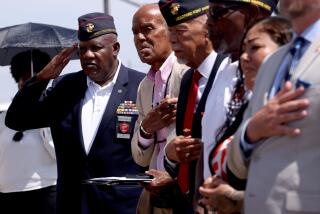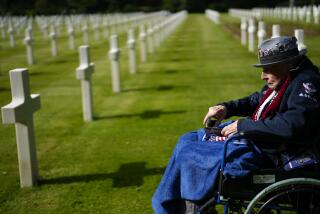Tom Rice, WWII D-day paratrooper who continued to jump out of planes, dies at 101
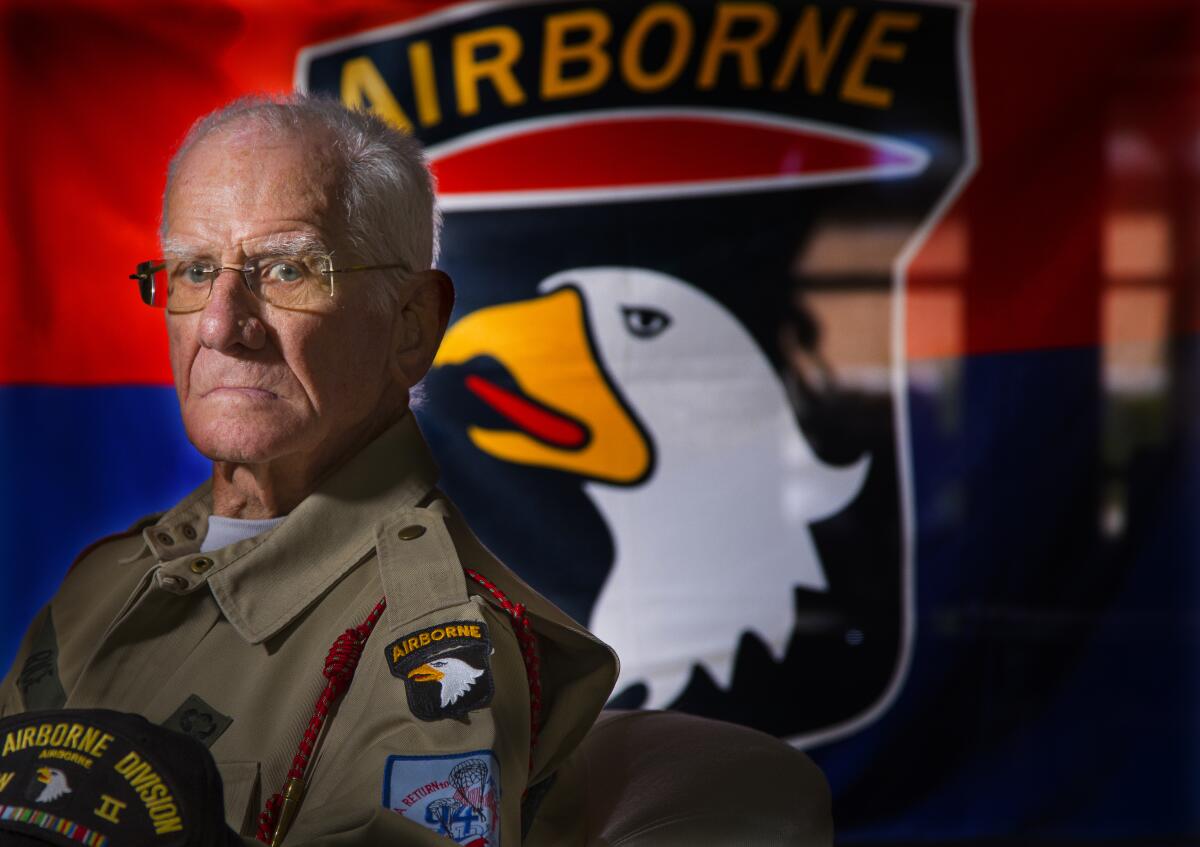
- Share via
SAN DIEGO — Tom Rice, a World War II paratrooper who jumped into Normandy, France, on D-day and in his later years marked anniversaries of that pivotal battle by jumping again, died Thursday at his home in Coronado. He was 101.
The cause of death was an accumulation of maladies, including prostate cancer, according to his wife, Brenda.
“He told me the first 100 years were a piece of cake, but he was a fighter to the end, bless his heart,” she said.
Like a lot of World War II veterans, Rice didn’t talk about his combat experiences when he came home and settled into a 44-year career as a social studies teacher and track coach at Chula Vista and Hilltop highs. One of the textbooks had a picture of D-day paratroopers, but he never mentioned he was there.
The stories came later, as the enormity of what the so-called Greatest Generation accomplished became better known and much celebrated in books and movies. Rice returned to Normandy in 1994 for the 50th anniversary commemoration of D-day, then again in 2019 for the 75th.
Both times he jumped out of airplanes, the first time on his own, the second time strapped to the chest of a younger skydiver. He went, he said, to honor those from his 101st Airborne Division who died in the war.
“I came home and they didn’t,” he once told the Union-Tribune. “I don’t want anybody to forget them.”
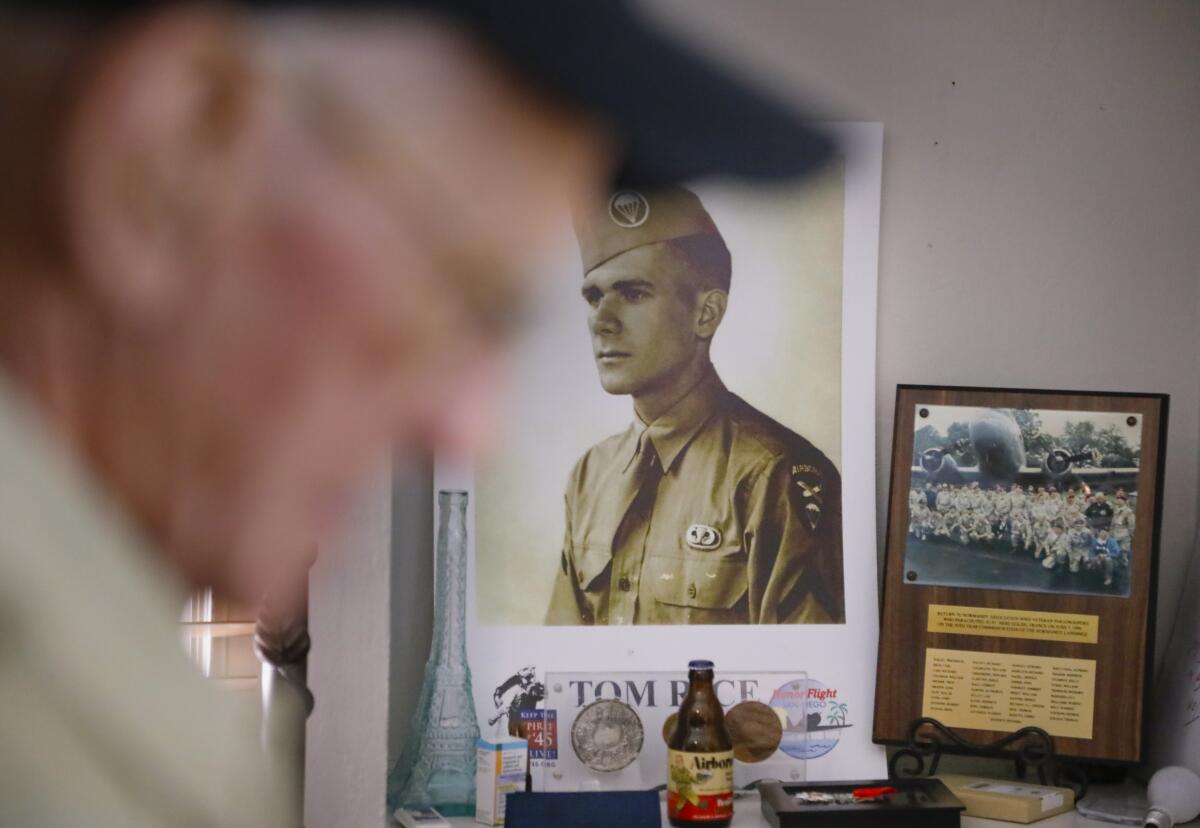
There were other jumps on other D-days, and a few at special events such as Veterans Day. His final tandem jump was last year, on his 100th birthday. He landed on the beach near the Hotel del Coronado in front of hundreds of cheering people and television cameras.
Born Aug. 15, 1921, in Coronado, Rice grew up in a house on H Avenue built by his father, a World War I veteran later killed in a plane crash in Panama. He graduated from Coronado High School in 1940, worked as a lifeguard on local beaches and started studying engineering at what was then San Diego State College before enlisting in the Army.
In the early morning hours of D-day, June 6, 1944, he was among some 18,000 paratroopers who flew from England to German-occupied France at the leading edge of the largest air, sea and land invasion in history.
Their job was to secure key roads, bridges and canals behind the beaches at Normandy and prevent a German counteroffensive.
There were 18 jumpers in Rice’s C-47 cargo plane. He went out first, loaded down with more than 100 pounds of ammunition, weapons and other gear. His left arm got snagged in the doorway when the plane lurched up. Wrenching himself free, he lost a Hamilton wristwatch he’d recently purchased.
“I hope some good Frenchman got it,” he remembered thinking as he floated down, landing about 1 a.m. in a field surrounded by hedgerows.
He linked up with 50 other paratroopers and glider pilots, signaling to each other with clickers and passwords. At one point, they surprised and captured hundreds of Germans.
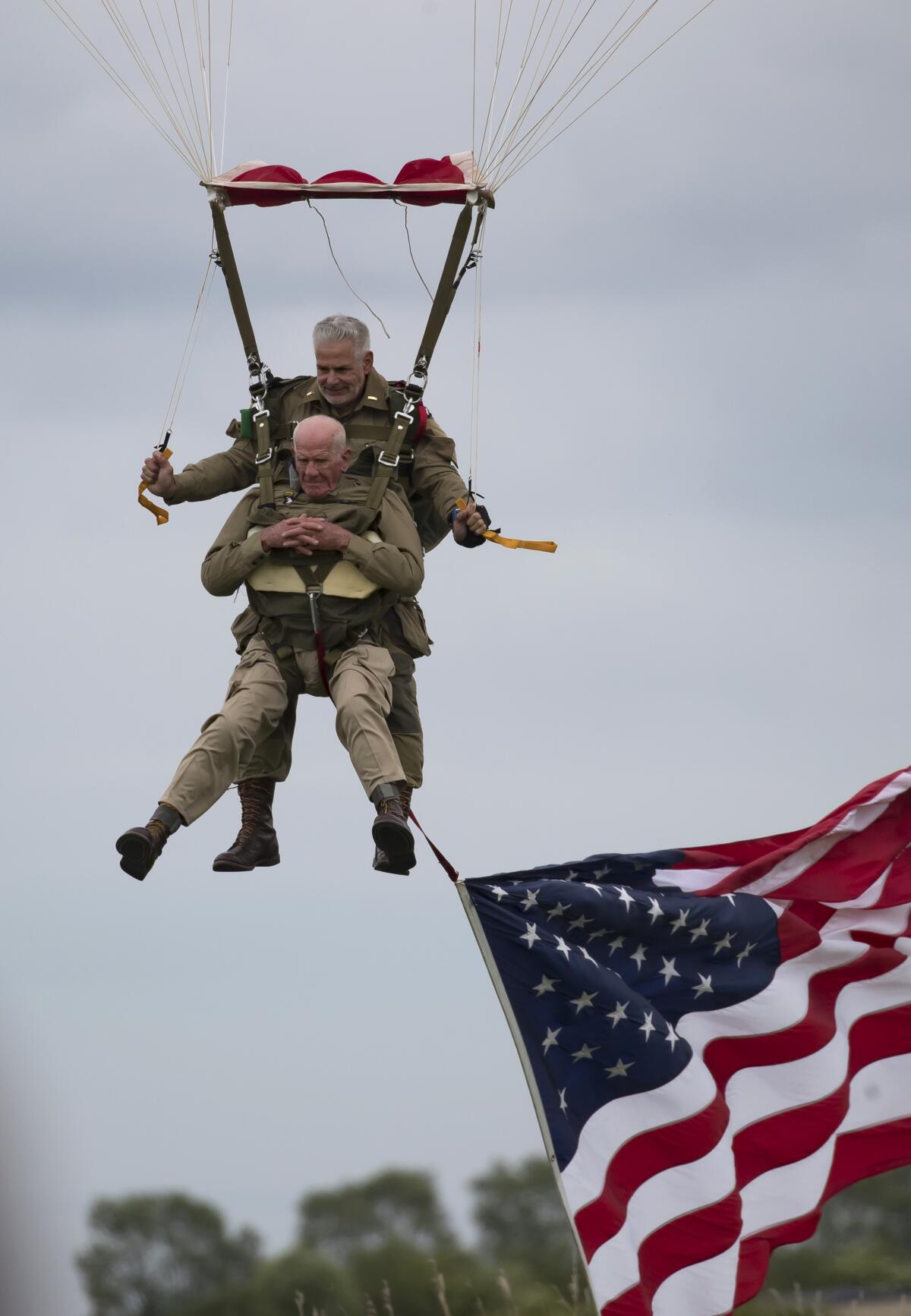
Near the end of D-day, he and two other soldiers guarding a canal gate killed a German soldier in a firefight. They made a crude cross out of tree limbs and buried him in a garden. Rice could tell by a patch on the German’s uniform that he was a paratrooper, too. He took the patch.
Rice spent the next month fighting in France as the Allies moved from town to town. He made one more combat jump, in September 1944, into Holland as part of Operation Market-Garden. He fought at the Battle of the Bulge in Belgium and was wounded by sniper fire.
He was awarded a Bronze Star with an oak leaf cluster and a Purple Heart with two clusters for his actions during those campaigns.
After the war, he returned to San Diego State and changed majors from engineering to education. He started teaching in Chula Vista and got married to another teacher, Barbara. After they retired, they moved to his childhood property in Coronado. She died in 2011.
Over the years, Rice became a regular presence at veterans and military events here and elsewhere, especially as the number of World War II vets dwindled. He was featured in a documentary film about the 75th anniversary of D-day. Hilltop High named its library after him in 2019.
As a piece of living history, he sometimes created a stir. People wanted his autograph, asked for selfies. “He touched so many people,” his wife said.
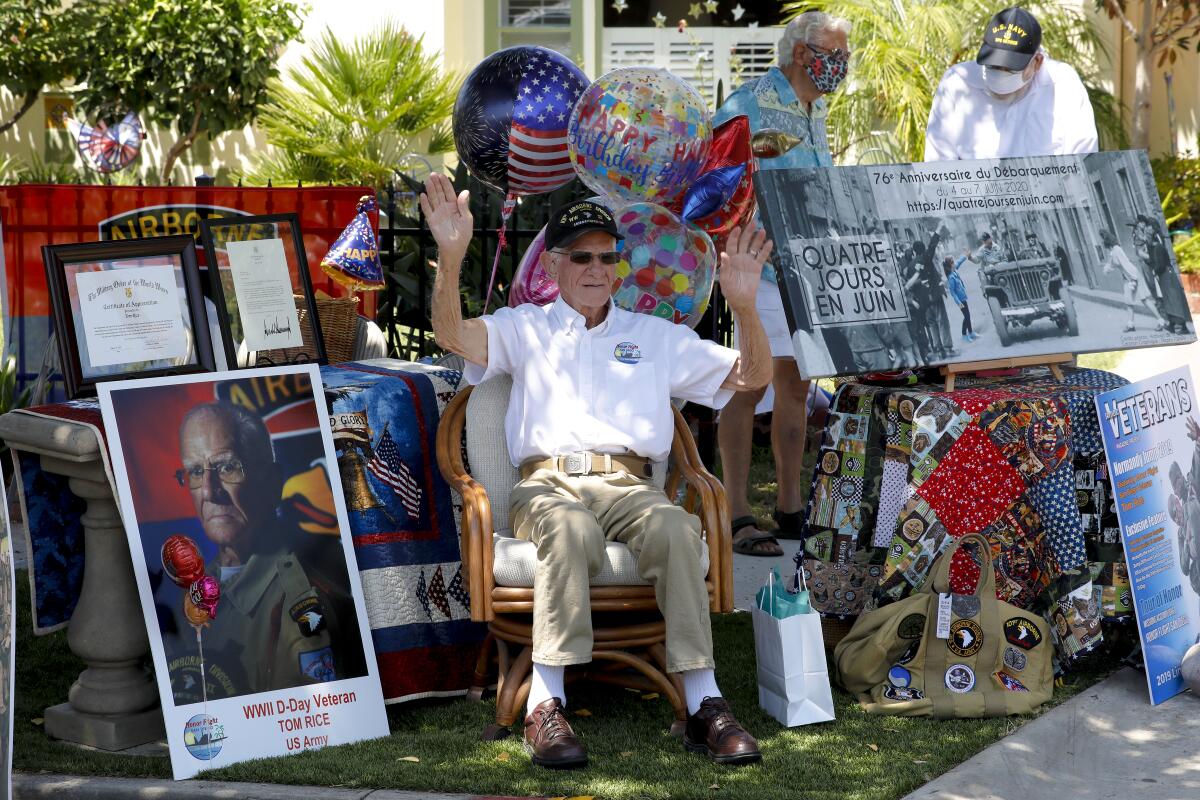
In 2018, during a visit to the National World War II Museum in New Orleans, he stopped at a D-day exhibit that included the jump list for the 101st Airborne’s Company C. His name was on it.
Museum staff, thrilled by the coincidence, asked him if he was really that Tom Rice. He recited from memory his Army serial number.
Complete information about survivors was unavailable. They include his wife, Brenda; two sons; and three daughters.
A memorial service is scheduled for Dec. 3 at 10 a.m. at Graham Memorial Presbyterian Church in Coronado, followed by burial at Fort Rosecrans National Cemetery.
More to Read
Sign up for Essential California
The most important California stories and recommendations in your inbox every morning.
You may occasionally receive promotional content from the Los Angeles Times.
